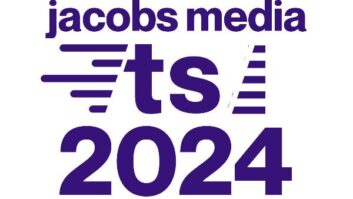For broadcasters, Wi-Fi’s success means consumer demand for rich online content will increase dramatically.
It is hard to pick up any technology publication, whether trade or mainstream, without seeing some mention of wireless data. It is the darling du jour and looks to remain so for some time. As fellow occupants of the media space, broadcasters would do well to study how this has come to be and how it could affect radio’s prospects.
Even the name most notably associated with the technology – “Wi-Fi” – hits close to home for any purveyor of audio media, many of whom can still remember the beginnings of the “Hi-fi” craze that FM radio leveraged with great success in the 1960s and ’70s.
Semper-fi
Computer networking has been around seemingly forever, at least in the digital age; but it’s only recently that the trend toward wireless networks has taken hold, in both the domestic and the enterprise spaces.
Interestingly, among networked homes, about two-thirds still use wired systems, according to a recent Forrester study, with the majority of these preferring Ethernet. The remainder generally use either HomePNA (over the home’s phone lines) or HomePlug (over power lines) systems, thereby avoiding the need to install the Cat-5 wiring required by Ethernet.
Of course, Ethernet typically offers up to 100 Mbps in the today’s domestic environment, while the others are limited to 14 Mbps or less.
Among the one-third of home nets that are wireless, however, it’s all 802.11. The previously competing format, HomeRF, has been sent packing by Wi-Fi’s success and is defunct. Wireless bandwidth is moving forward rapidly as 802.11a devices proliferate, offering 54 Mbps in the less-crowded 5 GHz band, and the first 802.11g systems arrive, with 54 Mbps bandwidth in both the 5 GHz and 2.4 MHz bands.
The latter units will be backward-compatible to 802.11b, allowing existing Wi-Fi users to enhance their existing systems incrementally with a 5x increase in throughput as new hardware is installed. It is also likely that the Wi-Fi name will become broadened to generic application for all these new variants by consumers.
Given that a primary usage of home wireless networks is for Internet connection sharing, even Wi-Fi’s 11 Mbps speed is well beyond the <1 Mbps provided to the home by DSL or the typical <2 Mbps of domestic cable modems. And these are the downstream speeds of generally asymmetrical distribution systems -upstream speeds are considerably slower.
On the other hand, as Wi-Fi and other unlicensed wireless systems become more popular and interference increases, the actual bandwidth enjoyed by users may be substantially slower than advertised networking speeds, so the overhead created by this differential could evaporate.
One takeaway from this analysis shows that strong growth potential remains in the wireless networking market segment. As broadband Internet prices drop and speeds to the home increase, demand for Wi-Fi and its successor systems likely will continue to soar for some time.
For broadcasters, this may also mean that consumer demand for rich online content will increase dramatically over the next several years.
Nothing succeeds like excess (capacity)
Wi-Fi was intended as a LAN technology, meaning that it was assumed that consumers or businesses would install 802.11b access points for strictly internal use in their respective homes or offices.
It wasn’t long before a bit of freeloading began, however, because these wireless LANs often extended beyond the physical boundaries of their owner’s premises. Wi-Fi’s access control mechanisms, discussed in a previous article, provided a method for curtailment of unauthorized access, but much of this usage was simply ignored.
Such “extended” access soon stimulated an unintended application for Wi-Fi, as “hotspots” began to be set up anywhere, allowing wireless Internet access to be provided for a business’s customers or the public at large. Thus what began as a “last-meter” system is now turning into a “cloud.”
At present, there is movement toward more coordination of such deployments. Rather than independent implementation of separate hotspots by numerous shops at a mall, for example, the mall operator can more efficiently deploy a unified system covering the entire property. Other examples include airports, hotels and conference centers, corporate or college campuses, and urban retail districts. Landlords can collect incremental revenue from tenants in such federations, as well as add value and more competitive appeal to their environments.
Similarly, a city’s government can do the same for its citizens. Aspen, Colo., was perhaps the first example of this, in an effort instigated by an activist citizen who volunteered to do most of the access point installations.
Now some larger cities are taking on the task in a more municipal fashion. The Bryant Park section of New York City and the Westminster district of central London are examples. In the London case, the city plans to reap some return itself by equipping its staff (e.g., police, building permit inspectors, etc.) with Wi-Fi terminals and allowing them to access city databases and other services directly from the field in this area. The city’s closed — circuit video cameras used for traffic monitoring and surveillance of public areas also will be backhauled and controlled via Wi — Fi.
While this is generally considered a positive development, several unresolved issues remain. This part of London also has a number of commercially provided hotspots, setting up a strange public — private competitive environment for Wi — Fi enabled citizens in the area. Some have also voiced concerns about adequate security on such a mixed-use network.
Most important, the success of such a system requires adequate bandwidth; otherwise its popularity will be its undoing. Reports from a recent trade show that offered Wi-Fi connectivity to its attendees but was unprepared for the popularity of the service showed that users experienced access speeds of as low as 10 kbps during periods of peak demand, far slower than dial-up service.
In search of a business model
The marketplace is at play for Wi-Fi at present, with a widely varying array of business models proposed. These range from a populist, egalitarian citizenry mutually offering free bandwidth to their neighborhoods, to a highly competitive service — provider battle — of-the-hotspots. Examples of the latter include T-Mobile’s deal with Starbucks to provide Wi-Fi in many of its coffee shops and Verizon’s recent announcement that it will establish hotspots around some of its payphone installations.
How to best capitalize these commercial services is an open question. T-Mobile requires users to establish a subscription, while Verizon simply will offer the service only to its existing DSL subscribers. Many Wi-Fi users already have objected that these service deals are not portable. An 802.11-enabled device works anywhere that the technology is offered, but these service providers are attempting to slice the Wi-Fi pie into proprietary slices, which runs against the grain of the established user base. Without some sort of “roaming” plan among such service providers, it is unlikely that this service-provider model will gain much traction.
Meanwhile, the private and municipal systems are finding favor among such users, along with the freely accessible commercial venue sites at hotels, airports, malls, etc., all of which simply provide Wi — Fi service as a value — add to their citizens or customers.
In this respect, the carefully crafted professional business plans of established telecom operators are being rendered moot by a citizen-driven force with no direct interest in capitalization of the service. As this phenomenon pushes the Wi-Fi movement toward ubiquitous, free, broadband wireless access, it simultaneously will allow online radio services greatly to expand their reach, eventually rivaling, and perhaps someday eclipsing, the coverage provided by on-air services.
Next time we’ll conclude with a look at what’s next for wireless computing technologies.
This is the third in four articles on this topic.












